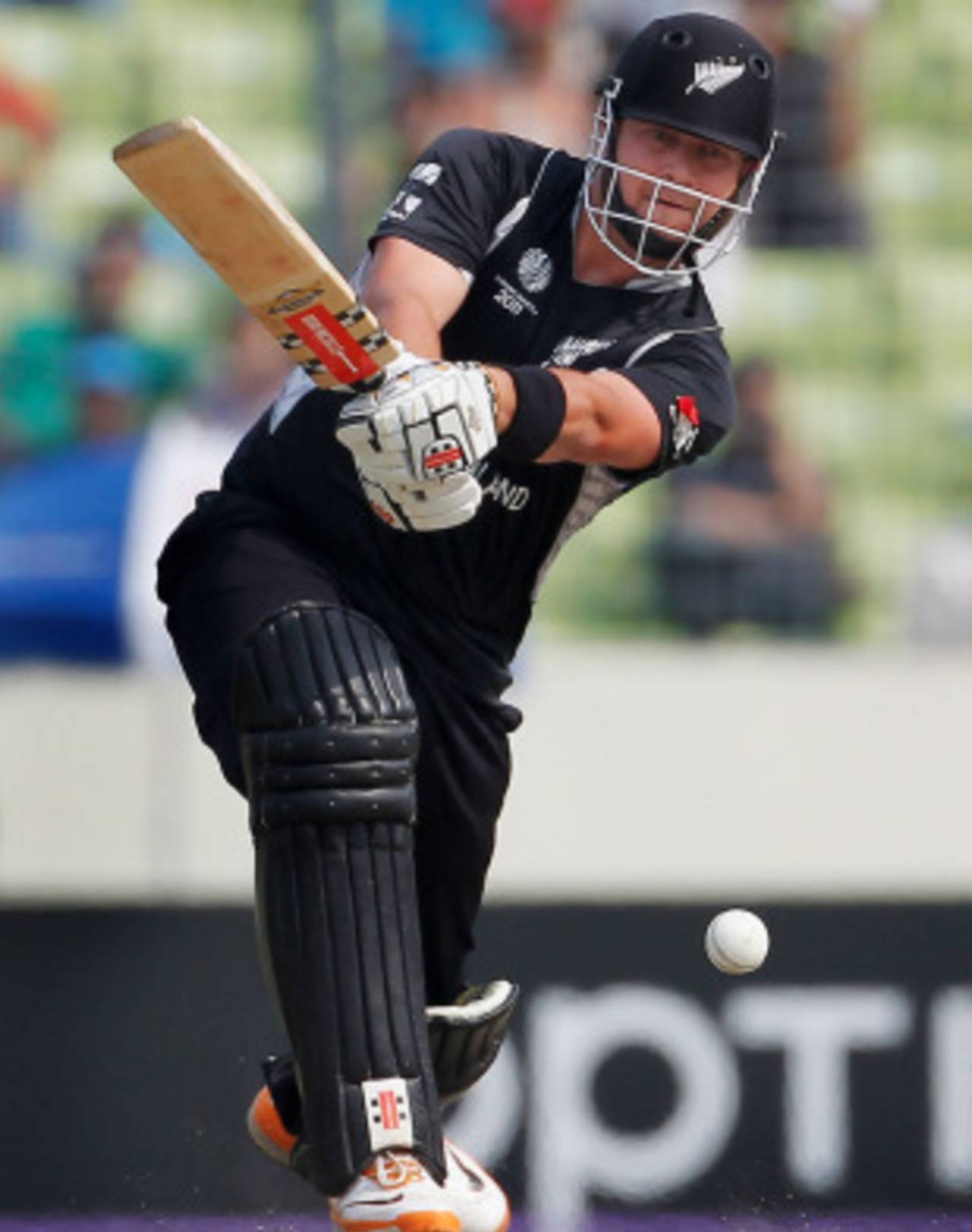New Zealand could do worse than look at what helped beat South Africa in last year's
World Cup quarter-final when they take the field in the first 50-over match of the series, on Saturday in Wellington.
The New Zealand side may have been shredded by retirement and injury since that riveting 49-run win last March, but there should be no less hope they can take on South Africa and win. Of the XI who pulled off such an unexpected triumph on the slow, low wicket in Dhaka, just six - Martin Guptill, Brendon and Nathan McCullum, Jesse Ryder, Tim Southee and Kane Williamson - are available for selection now. Scott Styris has retired, Daniel Vettori has quit limited-overs, Ross Taylor and Jacob Oram are injured and Luke Woodcock is unwanted. In contrast, South Africa's current squad is missing just one player from that match: Imran Tahir.
In a wider ODI context, if New Zealand get parity with South Africa in the current series it shouldn't surprise. South Africa might be ranked third in the world and New Zealand seventh but the Black Caps have had the edge over the last five and a half years. They have won
four of the seven contests, excelling when the pitches were slower than those South Africa are accustomed to at home.
Tight bowling has been important for New Zealand but gritty knocks have been the mainstay of those victories. Examples include Stephen Fleming's 89 (112 balls) in the searing
Mumbai heat of the 2006 Champions Trophy (before the pitch had to be glued for later fixtures); Styris' 56 (84 balls) in the 2007 World Cup,
in Grenada, and Ryder's 83 (121 balls) at last year's World Cup. Interestingly, each of those innings came in a tournament rather than a bilateral series, but New Zealand also dispatched South Africa
5-1 when they hosted them last, in 2004.
Regardless of personnel, the Dhaka win must boost New Zealand's confidence. They were written off beforehand but rose to the challenge against a South African team tagged a favourite (aren't they always?) to haul home the silverware.
Leading into this series New Zealand can glean several lessons from that quarter-final. Ryder's 83 can be classed as his most important one-day innings - especially seeing as he hadn't scored a fifty in three previous World Cup innings - and he anchored New Zealand's total (221 for 8) in the game. His return to fitness is welcome against an attack he knows he can counter.
Fielding was another base on which the 2011 performance was built. Few places offered safety to hit in the air or run ones and twos when the New Zealanders were marauding. Drills specialist Trent Woodhill needs to maintain the circus routine of acrobatics and choreography he regularly runs the team through at training. New Zealand's fielding pressure in Dhaka saw South Africa lose six wickets for 38 in 13.3 overs after they were cruising at 108 for 2 in the 25th. The skills on show provided a catalyst for better bowling because of the protection they offered.
Stand-in captain Brendon McCullum will also have noted that Vettori opened the bowling with two spinners back then, to take the pace off the ball . That tactic worked, and could be used again, although it might be harder to create early reverse swing with different balls now being used from each end.
